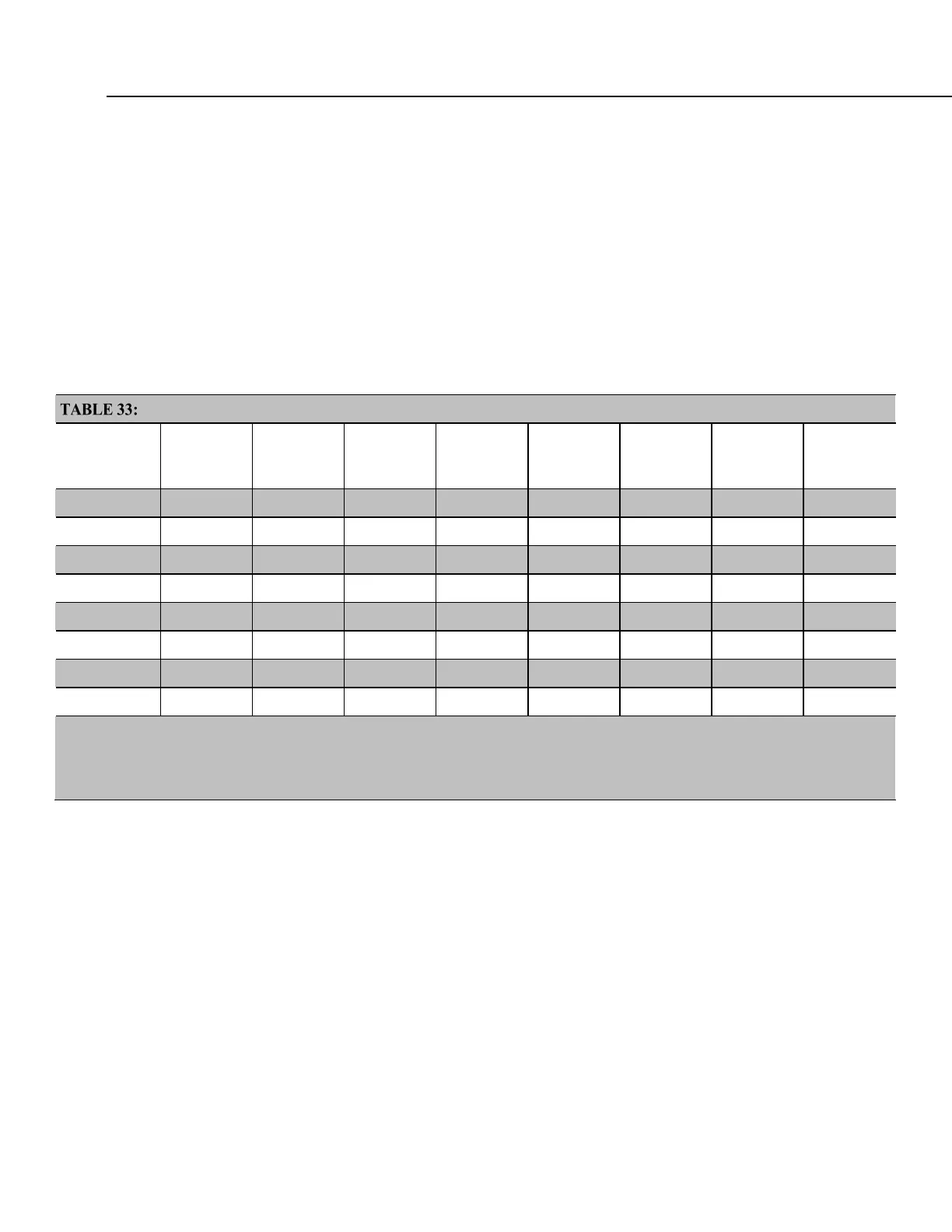Section 7. Installation
• Active: 66 mA
• Timeout: 15 s
Probes 1, 2, 3, and 4 are connected to SDI-12 / control port C1.
The time line in table Example Power Usage Profile for a Network of SDI-12
Probes
(p. 256) shows a 35 second power-usage profile example.
For most applications, total power usage of 318 mA for 15 seconds is not
excessive, but if 16 probes were wired to the same SDI-12 port, the resulting
power draw would be excessive. Spreading sensors over several SDI-12 terminals
will help reduce power consumption.
Example Power Usage Profile for a Network of SDI-12 Probes
Time into
Measuremen
t Process (s) Command
All
Probes
Awake
Time
Out
Expires
Probe 1
(mA
1
)
Probe 2
(mA
1
)
Probe 3
(mA
1
)
Probe 4
(mA
1
)
Total
mA
Sleep
0.25 0.25 0.25 0.25 1
1
1M!
Yes
120 66 66 66 318
2–14
120 66 66 66 318
15
Yes 120 66 66 66 318
16
1D0!
Yes
66 66 66 66 264
17–29
66 66 66 66 264
30
Yes 66 66 66 66 264
Sleep
0.25 0.25 0.25 0.25 1
1
Current use:
0.25 mA = sleep
66 mA = awake
120 mA = measuring
7.7.15 Compiling: Conditional Code
This feature circumvents system filters that look at file extensions for specific
loggers; it makes possible the writing of a single file of code to run on multiple
models of CRBasic dataloggers.
When a CRBasic user program is sent to the CR800, an exact copy of the program
is saved as a file on the CPU: drive
(p. 407). A binary version of the program, the
"operating program", is created by the CR800 compiler and written to Operating
Memory
(p. 408, http://www.). This is the program version that runs the CR800.
CRBasic allows definition of conditional code, preceded by a hash character (#),
in the CRBasic program that is compiled into the operating program depending on
the conditional settings. In addition, all Campbell Scientific dataloggers (except

